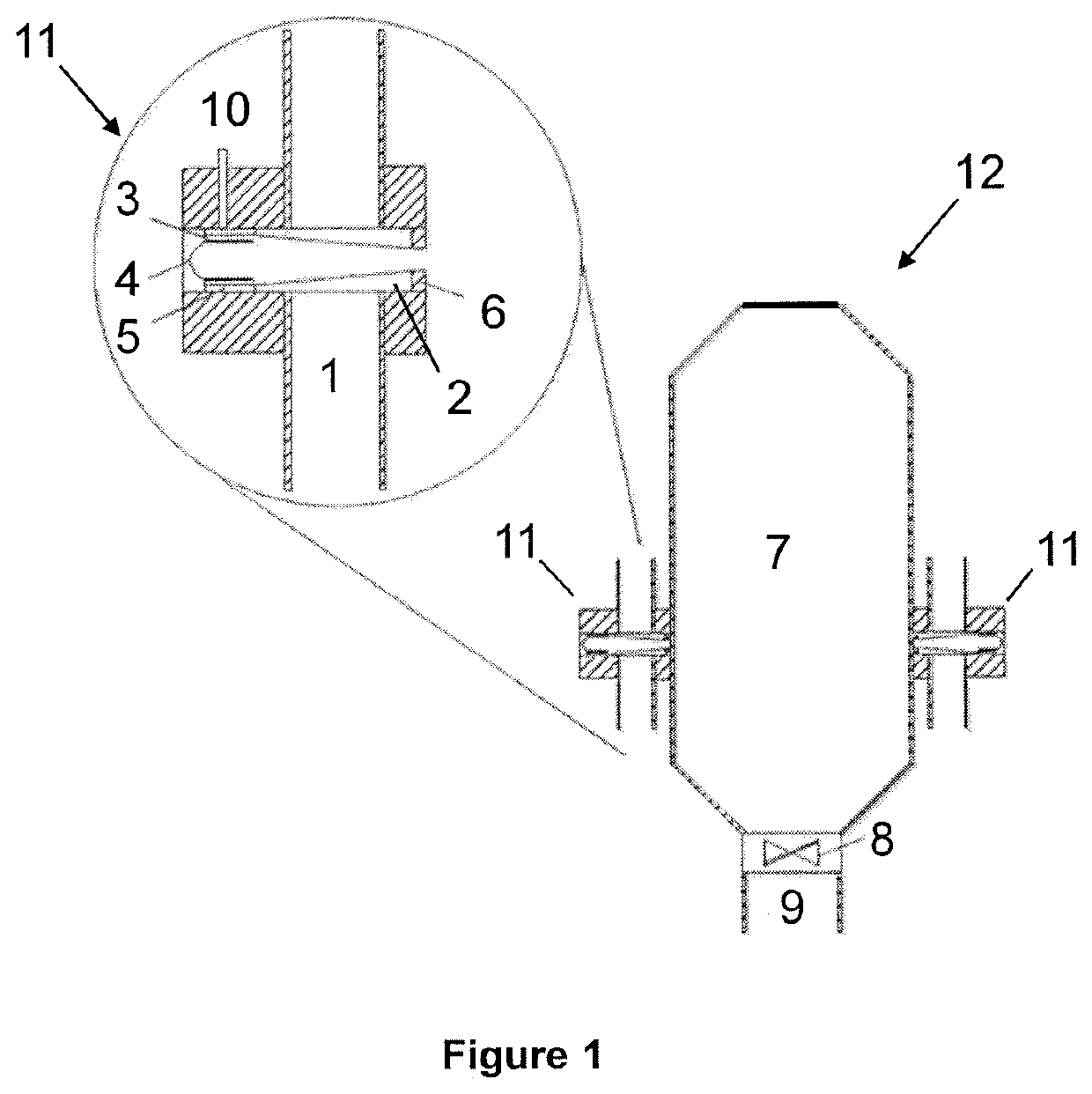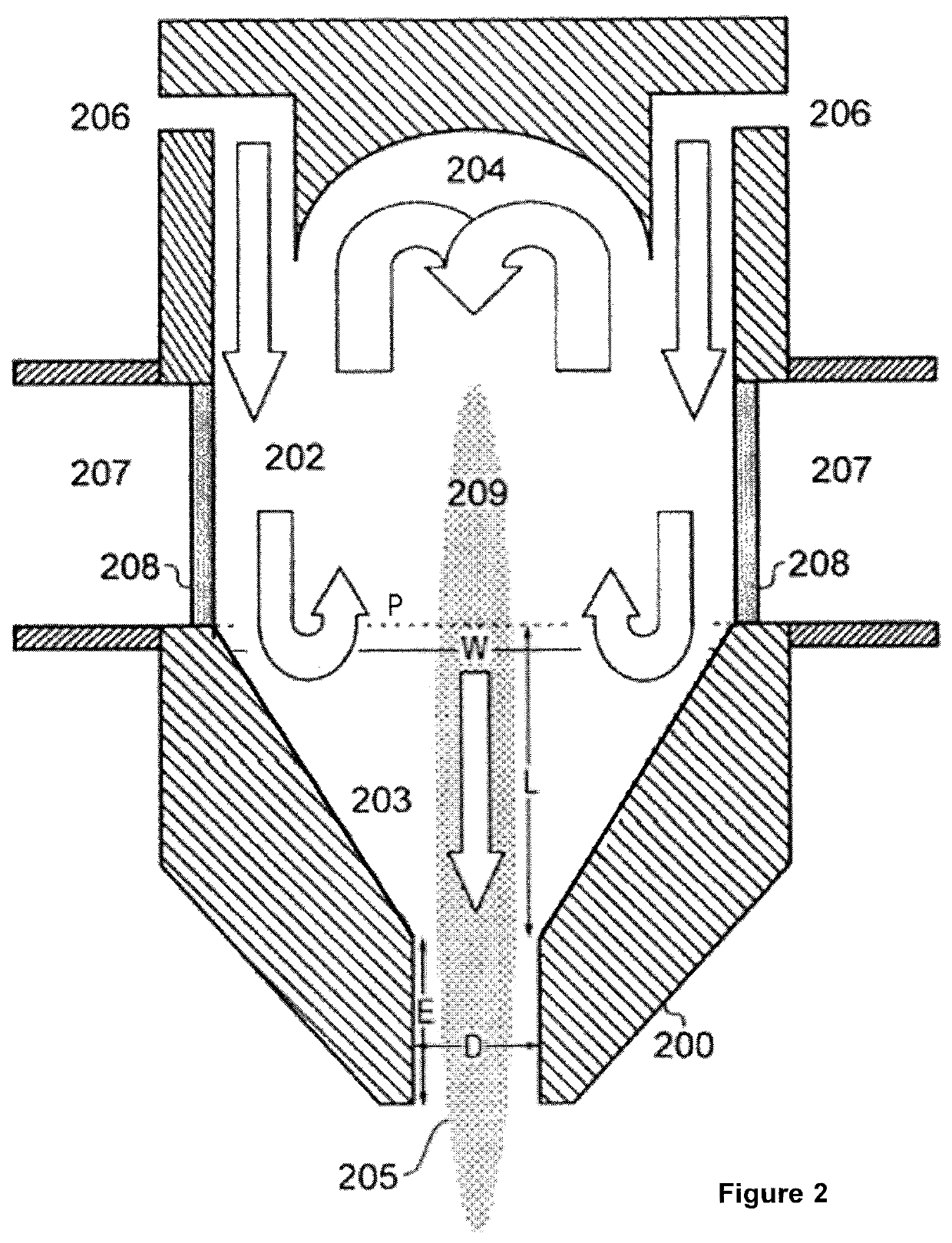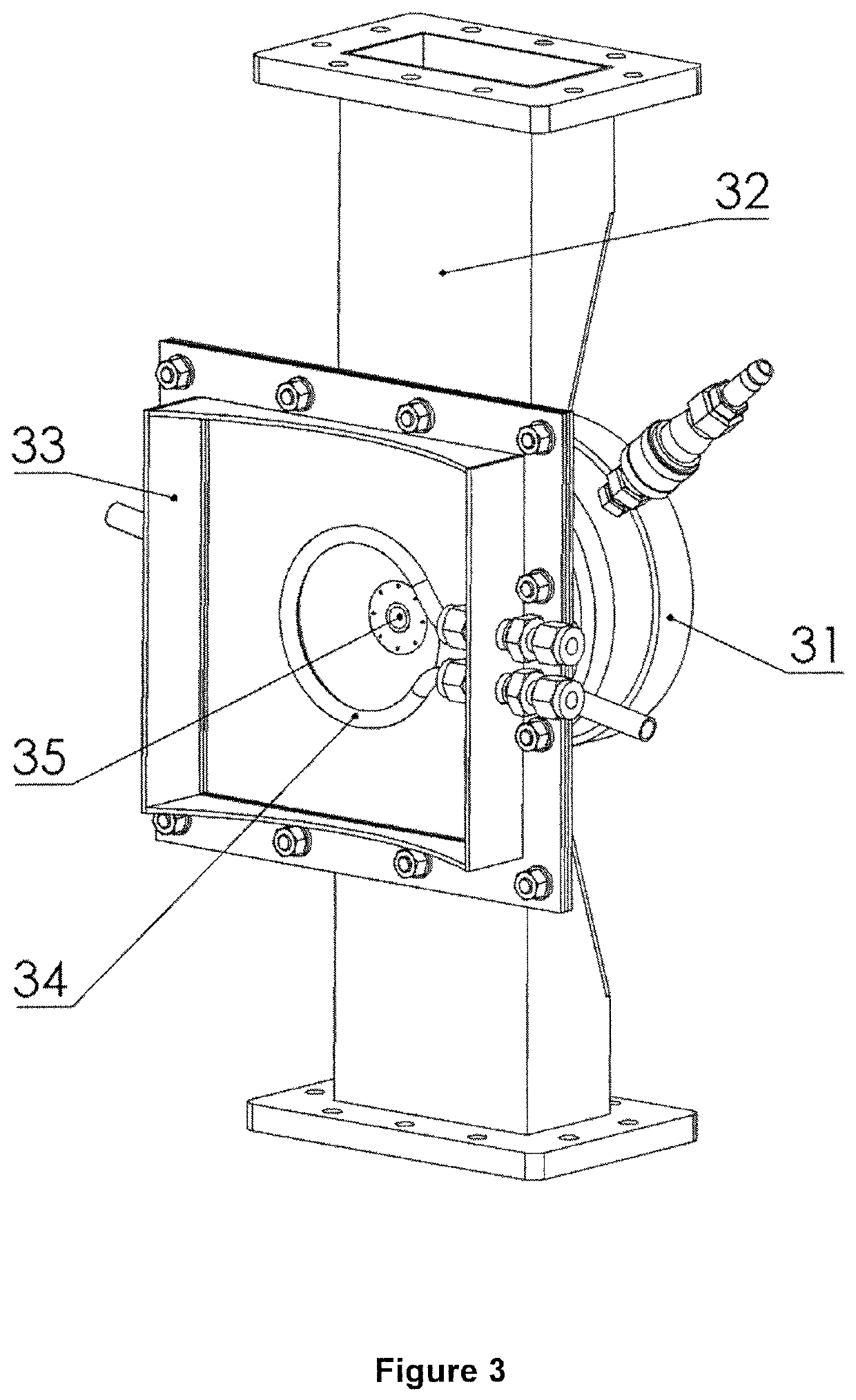Apparatus and method for plasma synthesis of carbon nanotubes
a carbon nanotube and plasma synthesis technology, applied in plasma technique, chemical/physical/physical-chemical processes, energy-based chemical/physical/physical-chemical processes, etc., can solve the problems of limiting the scalability of industrial processes, cvd is an inefficient method of obtaining active species for the synthesis of carbon nanotubes, and the structure of tubes is more complicated. , to achieve the effect of facilitating operation and increasing surface area
- Summary
- Abstract
- Description
- Claims
- Application Information
AI Technical Summary
Benefits of technology
Problems solved by technology
Method used
Image
Examples
examples 1 and 2
[0197]We produced quantities of CNTs in accordance with the present work, by direct injection of the catalyst precursor into the plasma afterglow. The synthesis conditions were as follows:
example 1
[0198]Natural gas was injected into the plasma nozzle at a level of 2 L / min together with hydrogen as a dilution gas at a level of 25 L / min, which results in a natural gas / hydrogen weight ratio in the feedstock of 100. Cracking of the hydrocarbon source at this dilution level leads to CNT formation. CNTs were collected in a filter at the end of a 1.5 m long reaction tube attached to the plasma nozzle.
example 2
[0199]Natural gas was injected into the plasma nozzle at a level of 5 L / min together with hydrogen as a dilution gas at a level of 25 L / min, which results in a natural gas / hydrogen weight ratio in the feedstock of 250. Cracking of the hydrocarbon source at this more concentrated level leads to CNT formation. CNTs were collected in a filter at the end of a 1.5 m long reaction tube attached to the plasma nozzle.
[0200]FIG. 7 presents Raman spectra of the CNTs of Example 1, and FIG. 8 presents Raman spectra of the CNTs of Example 2.
[0201]The relative intensity data of the peaks of the spectra in FIG. 7 are as follows:
[0202]
Infrared (785 nm)Red (633 nm)Green (532 nm)RamanRelativeRamanRelativeRamanRelativeshift (cm−1)intensityshift (cm−1)intensityshift (cm−1)intensity 1490.60464.50.197139.50.106 182.50.225145.50.321167.50.213 205.50.3291920.4761880.096 228.50.4302150.24813380.0331298.20.0471310.50.128159111564.50.3111581.512657.50.2561590.5117280.1041727.50.08426110.28025680.120
[0203]Simi...
PUM
| Property | Measurement | Unit |
|---|---|---|
| operating temperature | aaaaa | aaaaa |
| operating temperature | aaaaa | aaaaa |
| operating temperature | aaaaa | aaaaa |
Abstract
Description
Claims
Application Information
 Login to View More
Login to View More - R&D
- Intellectual Property
- Life Sciences
- Materials
- Tech Scout
- Unparalleled Data Quality
- Higher Quality Content
- 60% Fewer Hallucinations
Browse by: Latest US Patents, China's latest patents, Technical Efficacy Thesaurus, Application Domain, Technology Topic, Popular Technical Reports.
© 2025 PatSnap. All rights reserved.Legal|Privacy policy|Modern Slavery Act Transparency Statement|Sitemap|About US| Contact US: help@patsnap.com



